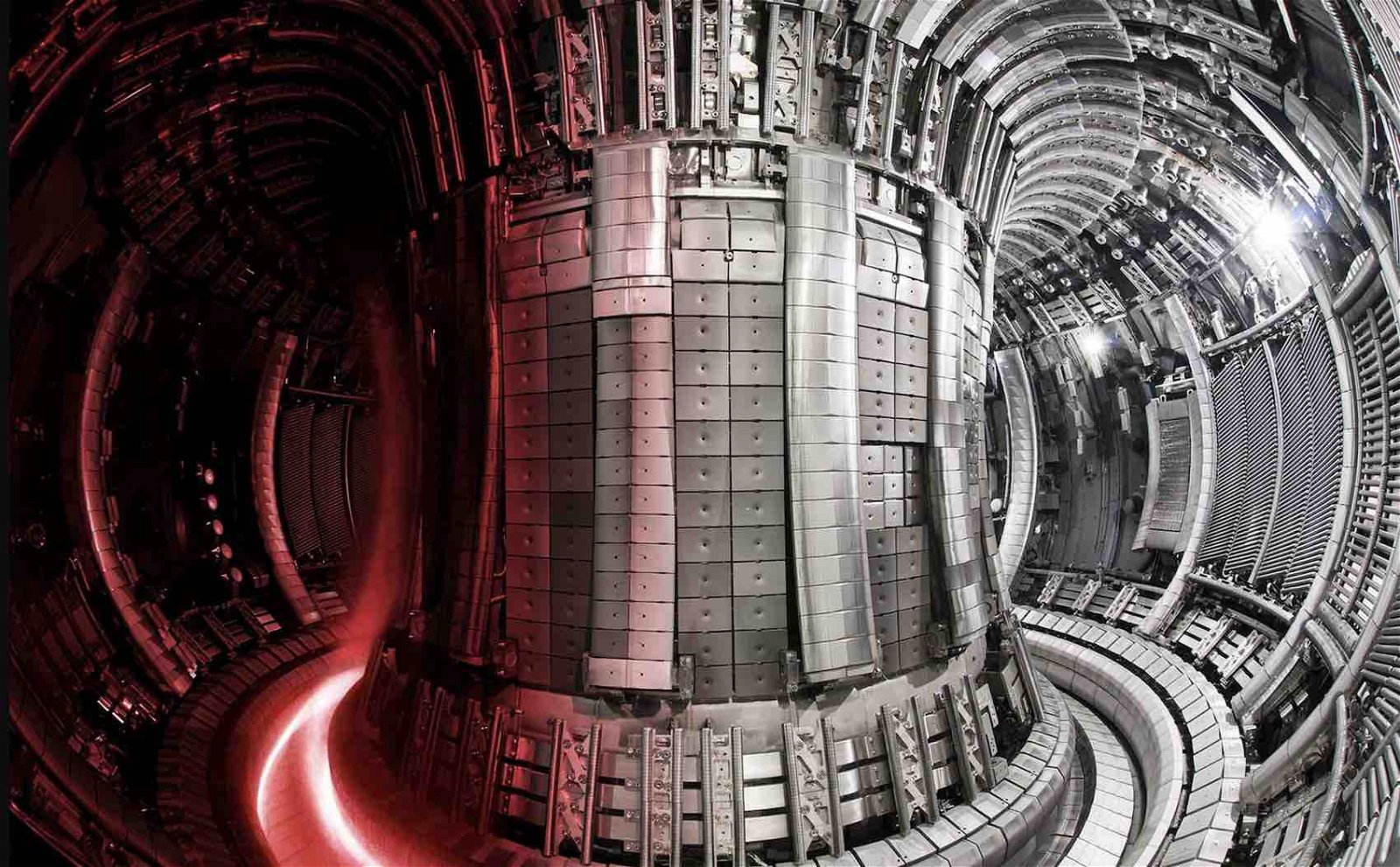A new world record in the production of fusion energy has been achieved with the Joint European Torus (JET), a development that marks the latest milestone in the promising field of fusion science and engineering.
The announcement was made on Thursday by the UK Atomic Energy Authority’s Culham Center for Fusion Energy, which said the JET was successfully able to generate fusion energy while setting a new record in energy output.
Previously, JET was able to demonstrate sustained fusion for more than five seconds at high power in 2021, at which time the device also marked a world record.
One of the largest fusion tokamaks in the world, JET is also one of the most powerful that currently exists. Like other tokamaks, JET relies on the generation of extremely powerful magnetic fields, which confine plasma into a donut shape.
According to the CCFE, more than 300 scientists from across Europe associated with EUROfusion made contributions to the experiment, producing landmark results that showcase JET’s potential for helping to facilitate safe and sustainable fusion energy sources.
Typically, tokamaks use sources such as deuterium, a stable isotope of hydrogen, and tritium, a radioactive one, which release very significant amounts of energy as they fuse and produce helium.
JET’s earliest deuterium-tritium experiments were undertaken in 1997. According to Thursday’s release, the device’s most recent deuterium-tritium experiments, which will also be the last the device will perform, were successful in generating high fusion power for close to 5 seconds, an experiment that yielded an impressive output of 69 megajoules from only 0.2 milligrams of fuel.
JET Senior Exploitation Manager Dr Fernanda Rimini said the experiment demonstrated JET’s ability to “reliably create fusion plasmas using the same fuel mixture to be used by commercial fusion energy powerplants,” which she said conveys the tokamak’s “advanced expertise developed over time.”
Emmanuel Joffrin, Ph.D., EUROfusion Tokamak Exploitation Task Force Leader from CEA, added that the experiment marked the first time that such conditions could be tested in a deuterium-tritium environment.
“Not only did we demonstrate how to soften the intense heat flowing from the plasma to the exhaust, we also showed in JET how we can get the plasma edge into a stable state thus preventing bursts of energy reaching the wall,” Joffrin added.
Joffrin says that the techniques, which are designed to help ensure the integrity of the walls of magnetic confinement devices, will also help ensure the safe and reliable function of similar machines in the future.
The achievements were several decades in the making, as JET has been used as part of an international collaborative effort aimed at helping bring to existence sustainable and cost-effective sources of fusion energy.
Later this month, an event will recognize the device and its achievements as it makes the transition toward repurposing and decommissioning, which the CCFE says “will honour its founding vision and the collaborative spirit that has driven its success.”
“Our successful demonstration of operational scenarios for future fusion machines like ITER and DEMO, validated by the new energy record, [instill] greater confidence in the development of fusion energy,” said Professor Ambrogio Fasoli, Programme Manager (CEO) at EUROfusion, in a statement released on Thursday.
“Beyond setting a new record,” he added, “we achieved things we’ve never done before and deepened our understanding of fusion physics.”
Micah Hanks is the Editor-in-Chief and Co-Founder of The Debrief. He can be reached by email at micah@thedebrief.org. Follow his work at micahhanks.com and on X: @MicahHanks.

